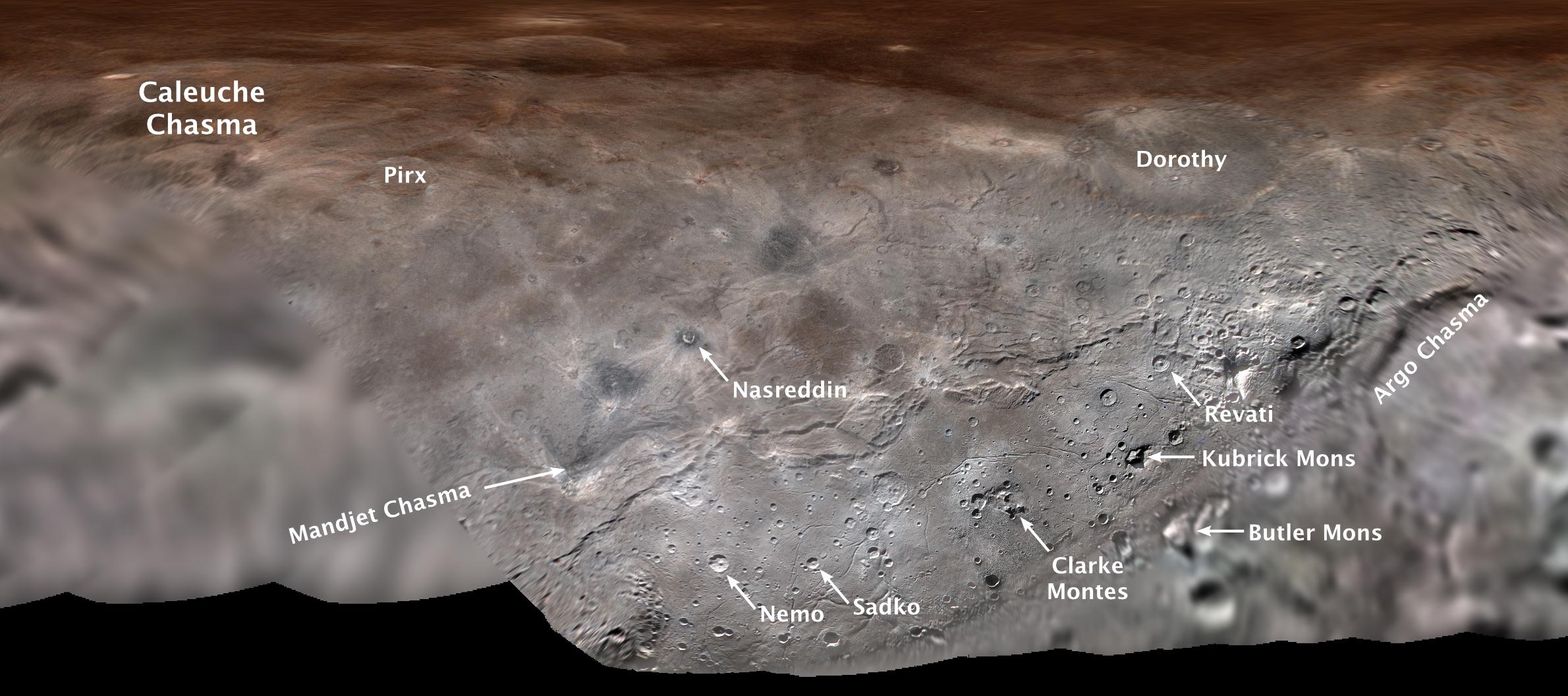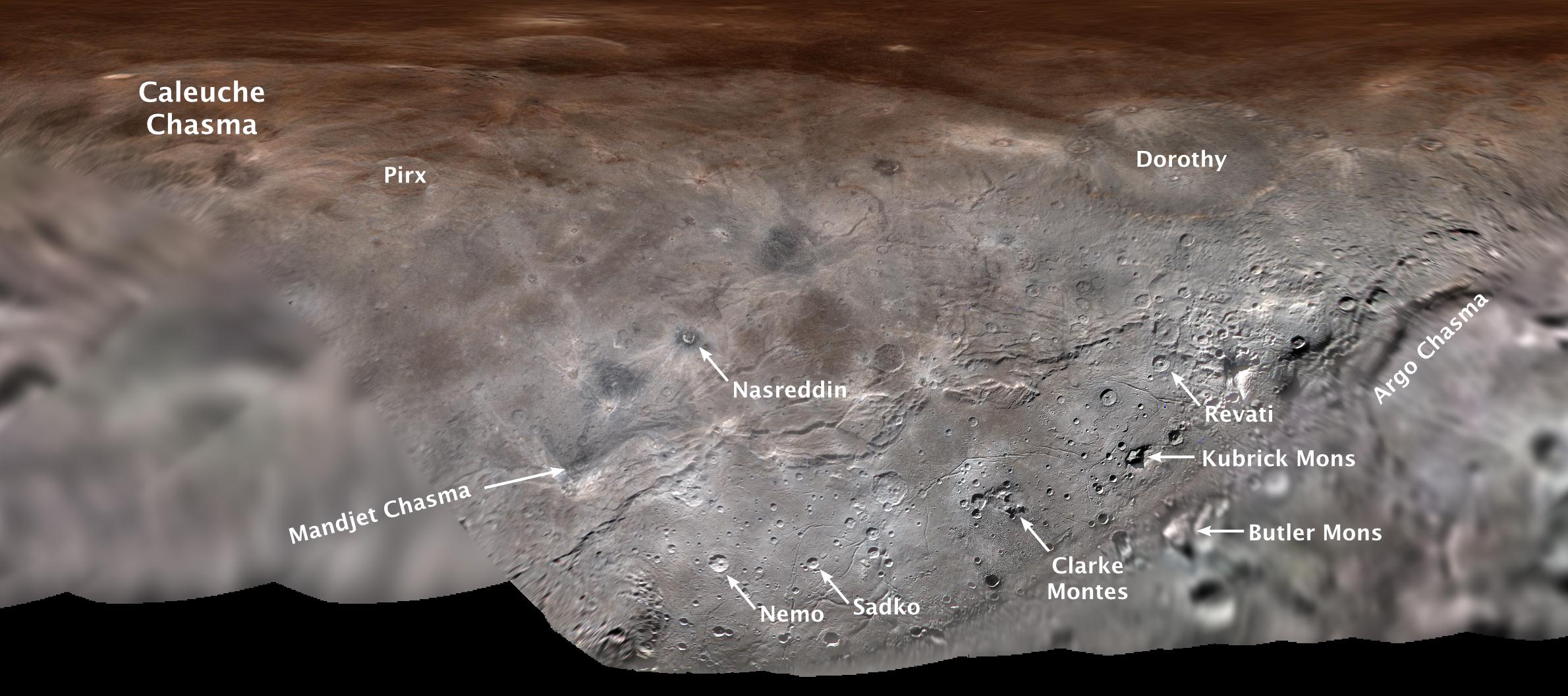Charon’s First Official Feature Names

| Credit | NASA/Johns Hopkins University Applied Physics Laboratory/Southwest Research Institute |
|---|---|
| PIA Number | PIA00442 |
| Language |
|
Map projection of Charon, the largest of Pluto's five moons, annotated with its first set of official feature names.
Many of the feature names in the Pluto system pay homage to the spirit of human exploration, honoring travelers, explorers and scientists, pioneering journeys, and mysterious destinations. The approved Charon names focus on the literature and mythology of exploration. They are listed here:
Argo Chasma is named for the ship sailed by Jason and the Argonauts, in the epic Latin poem Argonautica, during their quest for the Golden Fleece.
Butler Mons honors Octavia E. Butler, the first science fiction writer to win a MacArthur fellowship, and whose Xenogenesis trilogy describes humankind's departure from Earth and subsequent return.
Caleuche Chasma is named for the mythological ghost ship that travels the seas around the small island of Chiloé, off the coast of Chile; according to legend the Caleuche explores the coastline collecting the dead, who then live aboard it forever.
Clarke Montes honors Sir Arthur C. Clarke, the prolific science fiction writer and futurist whose novels and short stories (including "2001: A Space Odyssey") were imaginative depictions of space exploration.
Dorothy Crater recognizes the protagonist in the series of children's novels, by L. Frank Baum, that follows Dorothy Gale's travels to and adventures in the magical world of Oz.
Kubrick Mons honors film director Stanley Kubrick, whose iconic "2001: A Space Odyssey" tells the story of humanity's evolution from tool-using hominids to space explorers and beyond.
Mandjet Chasma is named for one of the boats in Egyptian mythology that carried the sun god Ra (Re) across the sky each day – making it one of the earliest mythological examples of a vessel of space travel.
Nasreddin Crater is named for the protagonist in thousands of humorous folktales told throughout the Middle East, southern Europe and parts of Asia.
Nemo Crater is named for the captain of the Nautilus, the submarine in Jules Verne's novels Twenty Thousand Leagues Under the Sea (1870) and The Mysterious Island (1874).
Pirx Crater is named for the main character in a series of short stories by Stanislaw Lem, who travels between the Earth, Moon and Mars.
Revati Crater is named for the main character in the Hindu epic narrative Mahabharata -- widely regarded as the first in history (circa 400 BC) to include the concept of time travel.
Sadko Crater recognizes the adventurer who traveled to the bottom of the sea in the medieval Russian epic Bylina.
With a diameter of about 755 miles, the Texas-sized moon is one of larger known objects in the Kuiper Belt, the region of icy, rocky bodies beyond Neptune.

